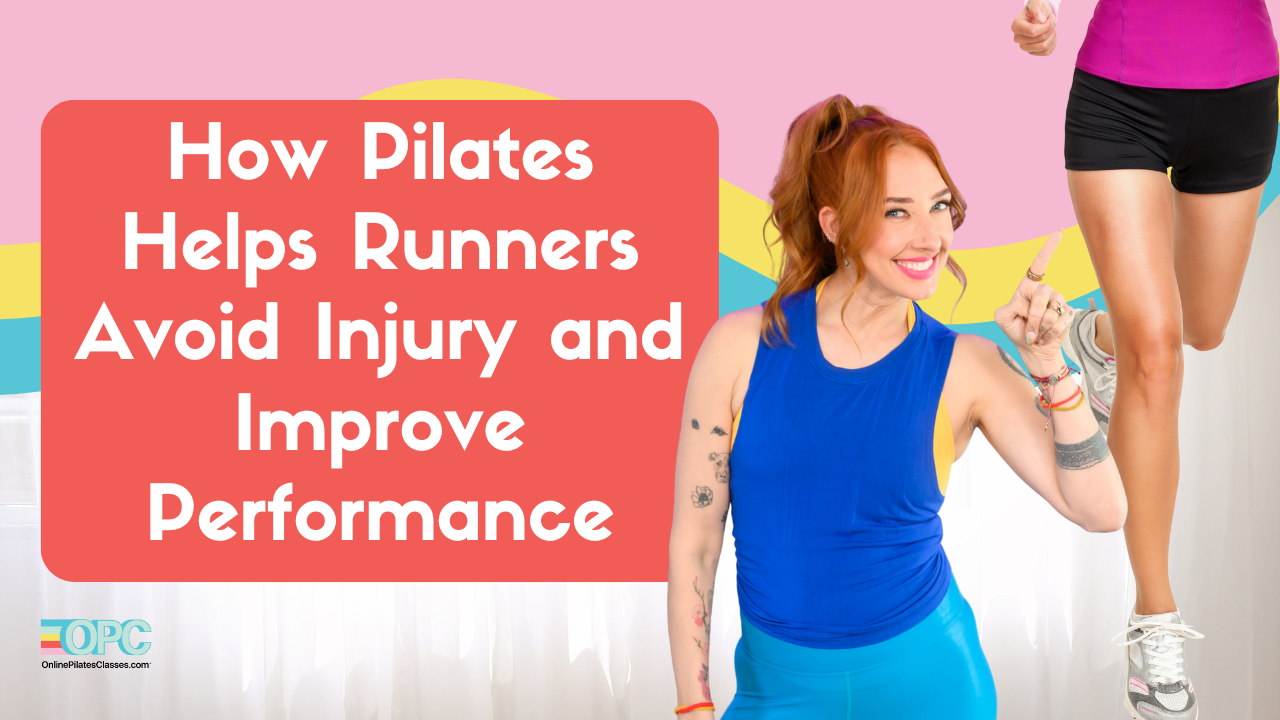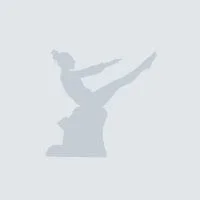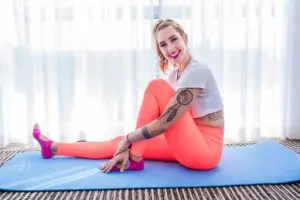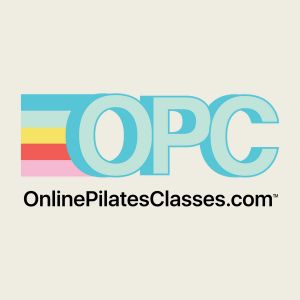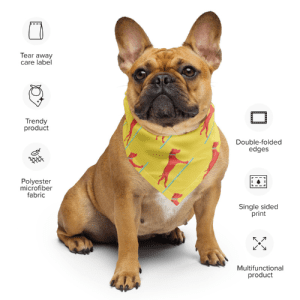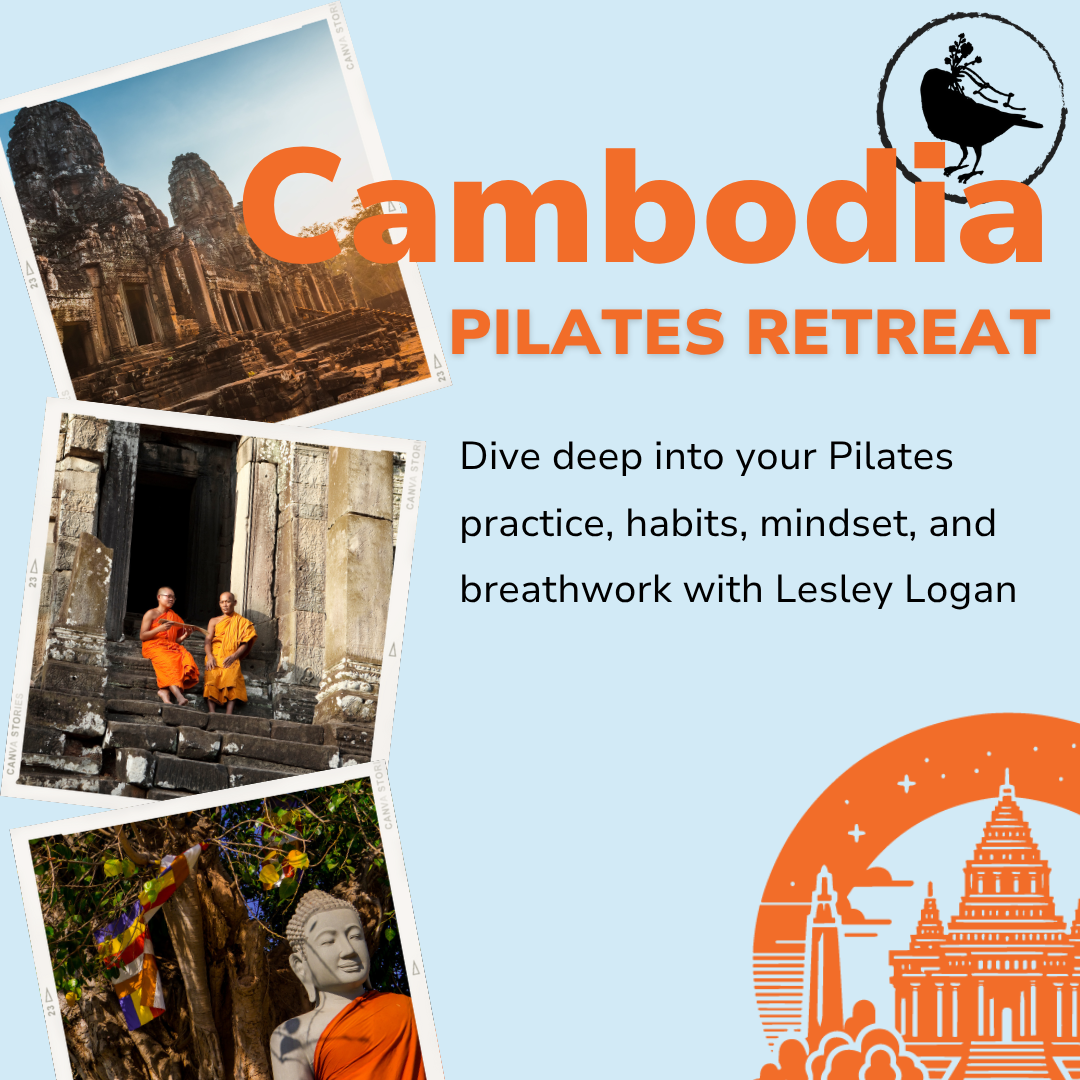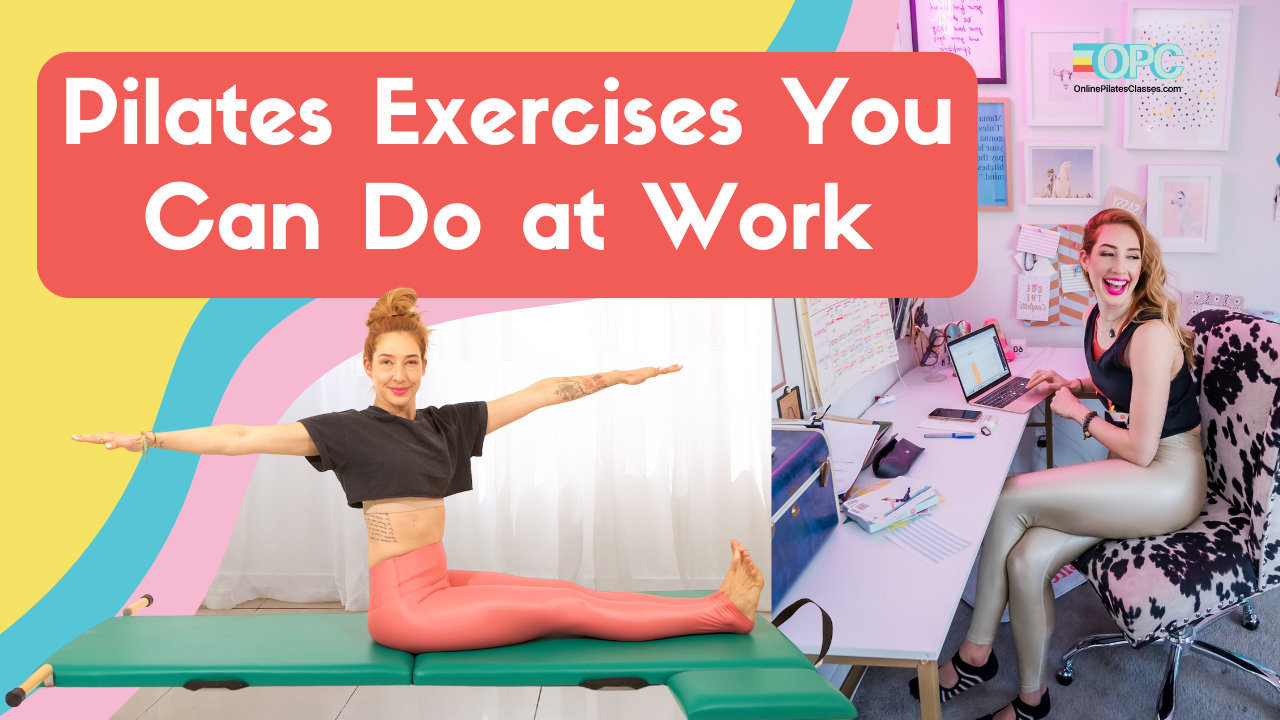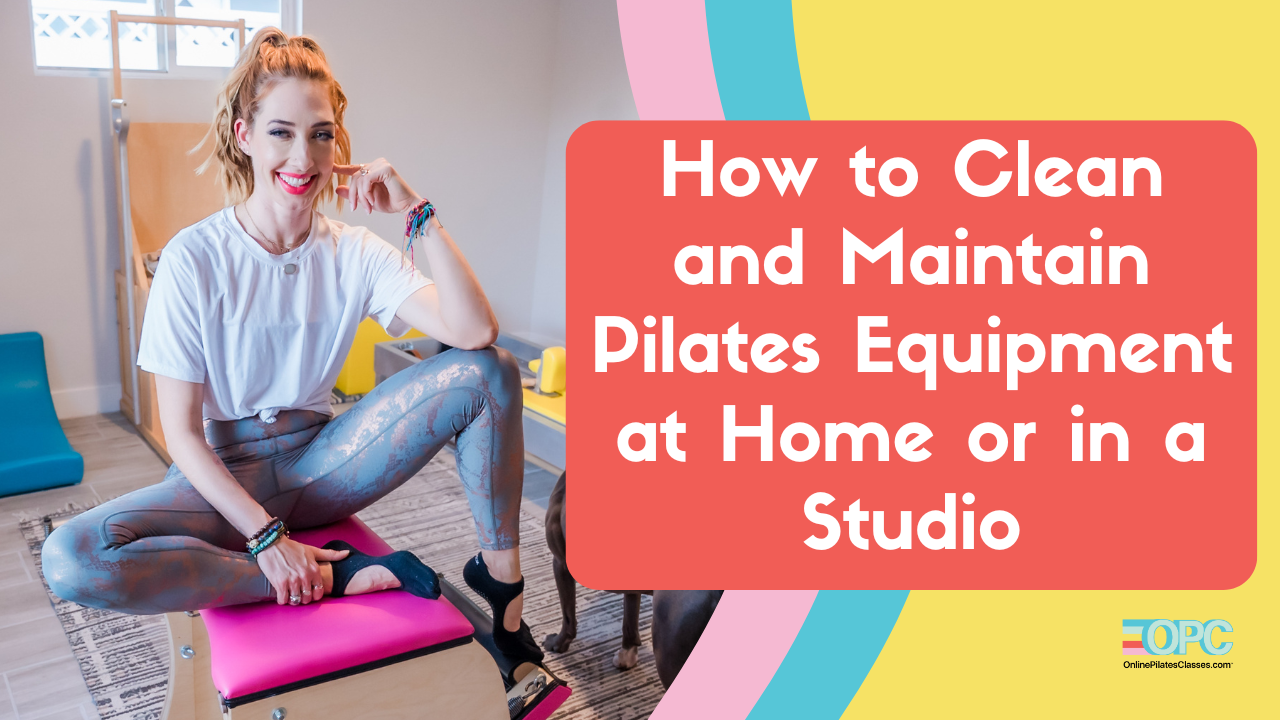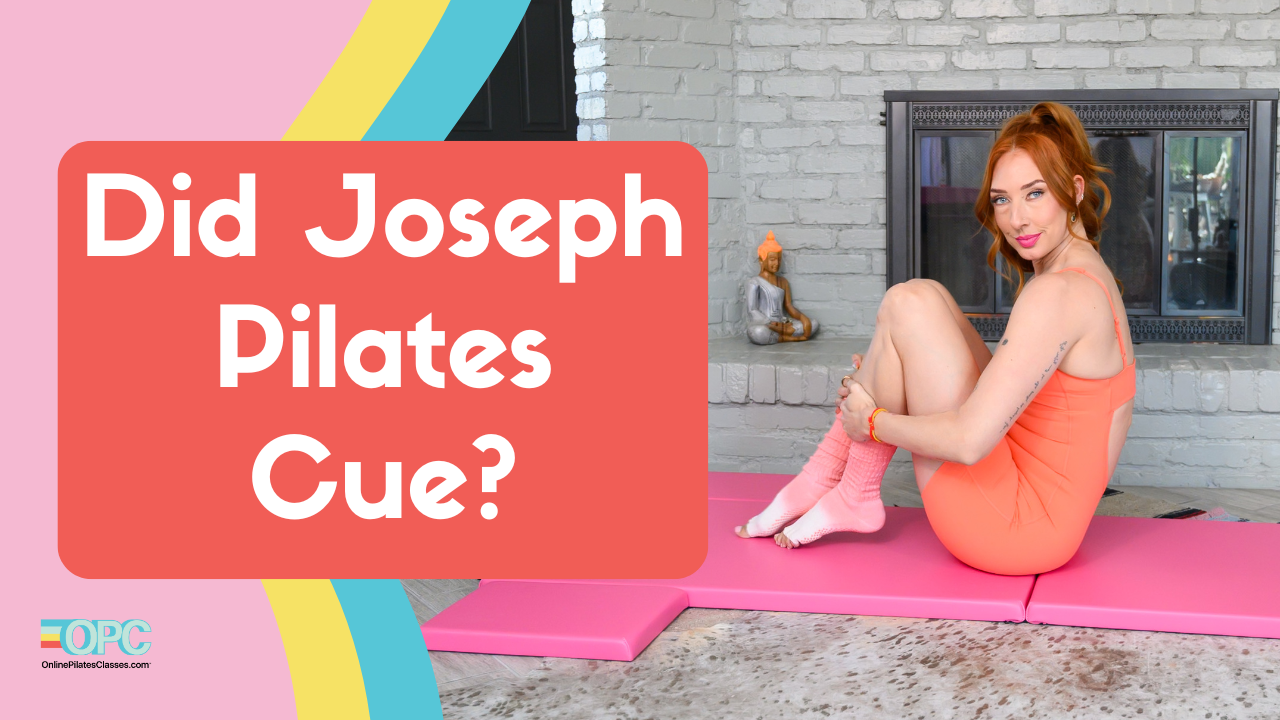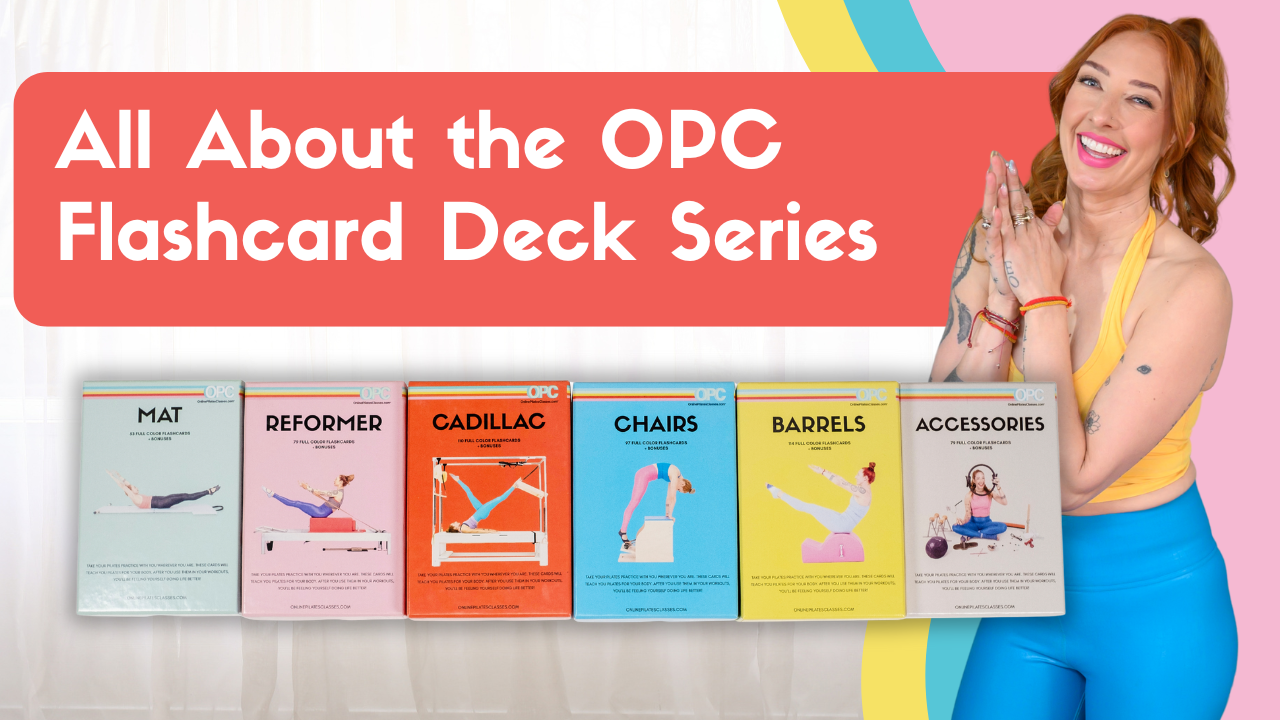Why Runners Should Add Pilates to Their Training
Alright, runners, let’s talk about how Pilates can help keep you injury free, but also Pilates to improve running performance. Whether you’re a weekend runner, a marathon runner, or someone who wants to be an elite runner, Pilates can work for you.
Welcome to Online Pilates Classes, the most supportive Pilates community worldwide. Enjoy new weekly classes from our incredible teachers. Download the OPC app today.
Hi, I’m Lesley Logan, co-founder of onlinepilatesclasses.com and I’ve been teaching Pilates since 2008 but doing Pilates since 2005 and I was a runner. I was a sponsored runner and a coach for a sponsored team. Pilates for running injury prevention is exactly what kept me healthy as I returned to running. So let me tell you a little about my running career. I actually became a runner in high school. Wanted to be a cross country and track runner like my dad and I was really great at running, not a fast runner, but really good at it. And so I did a little retirement year because of some injuries I was having in college, when I got into Pilates, I realized I felt strong around my hips. I was having less aches and pains. And so I actually picked running back up. And in 2013, I was running competitively again, in marathons, winning half marathons with my running partner. And I got to actually train elite runners. All of the elite runners that I got to train the year that we did Pilates with them, all of them made it to the Boston Marathon, injury free. And I am so excited for them for that, and you can have that too. So let’s get into it.
Benefits of Cross-Training with Pilates for Runners
Why should runners cross train with Pilates? Well, first of all, running is very repetitive as you know, we don’t have to talk about that, and it can actually create a lot of impact on certain joints of the body. Also, running can affect posture and create tightness in certain parts of the body. So Pilates is actually the opposite of those things. One of the biggest benefits of Pilates for runners is to help balance your imbalances. It’s going to improve strength. It can go with you anywhere, which is another reason why I love Pilates for runners. You can do it anywhere—on the ground, in a park, or at home. And it fits perfectly into any routine. Pilates exercises for runners are ideal because they offer that portability while targeting key muscle groups. So it’s going to create mobility and longevity, not just for your running career, but for your life. And so Pilates really, truly is the thing that helped balance the imbalances in my body, which prevented injuries in knees, hips and more. Pilates also improves your form. And when your form improves, so does your performance. Whether you’re racing or finishing strong, core strength for runners developed through Pilates makes all the difference. So whether you’re trying to win a race or just make it to the finish line, adding Pilates to your running practice is going to improve that performance and get you there. If you’re curious about the benefits of Pilates for athletes, check out the video that we did to help improve athletic performance using Pilates.
Pilates Strength Exercises for Runners
I want to talk about some exercises for three key areas for you. We’re going to talk about strength, flexibility and injury prevention, and we’ll give you exercises for each one of those. First, we’ll talk about strength. Strength training for runners is super key. You know this, I don’t have to sell you on it, but what I will say with Pilates, especially on the Mat, there are so many exercises I’m only gonna talk about five, but there are several exercises that are going to help with the strength training that you need to improve your performance. These five that I’m pointing out to you are great for the core strength, but also connecting your entire center—both of which are essential in Pilates for runners knee support and overall injury prevention.
How These Core Exercises Improve Running Form
In Pilates, we consider your center the muscles around your axial skeleton, so think tailbone to the crown of your head, and the muscles around your upper back, so front and back. So when you do the Single Leg Stretch and Double Leg Stretch, Single Straight Leg Stretch, you’ll see all three of these exercises actually require arms to work from your back. This is gonna help you with your posture, but also be working your core strength at the same time. And as you can see, with Single Leg Stretch and Double Leg Stretch, you’re actually stretching your hip. With Single Straight Leg Stretch, you’re actually gonna be stretching your hamstrings while also activating them, which is super key in making sure that you not only have strength of the hamstring, but mobility with that hamstring. Double Single Straight Leg Stretch is probably one of my favorites, because it works your inner thighs, outer hips, while working your core. We also get to open up your shoulders and push your head into your hands to help increase that upper back strength. And Criss Cross, we all need to twist things out every once in a while, and so Criss Cross is a great way to wrap up these five exercises. I need a twist to that spine, something we don’t really do when we’re running, while also strengthening our core. These are also excellent examples of Pilates for long-distance runners, especially since they support posture, endurance, and full-body mobility.
If you’re new to Pilates, these can be overwhelming, so check out our Pilates for beginners video. It will actually explain how to have proper form and understand the transitions and connections you’ll need to do Pilates.

Increase Flexibility & Mobility for Long-Term Running
Flexibility and mobility are key for having a long career as a runner. I know career might be a strong word, but just having a long passion for running that you get to keep up with, right? So I have a few exercises here that are going to help with those tight hips, tight hamstrings, tight back, that will prevent those in the future and also create mobility and longevity in your running career. My absolute favorite exercise for all runners is a Single Leg Kick. It is amazing. As you can see, you are propped up, opening your chest. You’re working your upper back, thoracic spine, trying to get some mobility there, while also working your core against gravity and, most importantly, using your hamstring to pull your foot to your seat and stretch the front of your hip. So it’s not all stretch. It’s got strength and flexibility combined into one exercise. It’s nice and dynamic. I love this as a warm up for a sprint day or a speed day it can be really great. But if you have a long distance stay, it’s essential.
Improve Hip & Quad Mobility with Thigh Stretch
Look, I don’t like to stretch either, right? I don’t want to stretch at the end of a workout, I don’t want to stretch at the end of a run, but I promise you, adding a single leg kick and these next two exercises are going to be key for that longevity you’re looking for. Thigh Stretch. I never, ever skip Thigh Stretch. Even though I don’t run competitively anymore, I still have quads that have to be stretched, right all the things that we do all day long. And so Thigh Stretch is an incredible exercise for opening the front of your thighs while asking your inner thighs to be working and using your hamstrings and glutes to help you with that. You cannot do this exercise without those hamstrings and glutes. So not only you are going to be getting some mobility in the front of your hips, but some strength for the runs you’re about to do. It’s honestly one of the best Pilates stretches for runners because it combines both mobility and strength in one move.
Runner Favorite: The Saw for Back & Hamstring Relief
And lastly, the Saw. This is probably my runner’s favorite exercise to do. In fact, I had several elite runners who would want to do more reps than they needed to of the Saw. But there’s something so nice about the Saw, because, again, it has that twist from criss cross we’re looking for, but it also has some flexion, so you’re gonna get to stretch your lower back and around your hips, it requires us to activate those hamstrings and glutes that we got from our Single Leg Kick and our Thigh Stretch, but you’re gonna get some great mobility in your lower back. It’s gonna be wonderful after a long run. Greater flexibility helps your stride and makes running feel smoother.

Prevent Runner Injuries by Balancing Imbalances
Injury Prevention is key for a runner. No one wants to be sidelined walking things off or resting, and so how we do that using Pilates is that we’re actually gonna balance your imbalances. See, Pilates actually requires us to use all the little muscles as well. So when you’re doing Pilates, you’re actually letting the bigger muscles, like take a break, so we’re doing quality reps and bringing in those smaller muscles which help prevent imbalances in your body that can be the next source of an injury. These kinds of mindful movements are exactly why Pilates for flexibility and mobility is so effective for runners. When you’re doing these exercises, you’ll see that these actually going to actually work on balancing the imbalances around your knees, hips, and especially your lower back. Single Leg Circles is one of my favorite exercises that will prevent injuries, because it really does work on mobility in the hip, while also asking the hamstring to stretch. It’s also an asymmetrical exercise. So if you notice that you have a dominant side, a side that’s a little bit stronger, you can actually perform this on the side that needs more attention, then the strong side, then go back to that weaker side and give it that attention that it needs. You’re gonna get great mobility of the hips, like I said, but also it requires a core strength to work and the standing leg hamstring to turn on as well. So it’s a full body exercise the whole time.
Strengthen and Stretch with Side Leg Kicks & More
Next is Spine Stretch Forward. This dynamic stretch of the lower back requires the core to work, so you’re getting more core strengthening exercises to help open that lower back. But also your hamstrings have to activate so you stay at your hip flexors, which is going to allow you to do an active static stretch on those hamstrings, helping you prevent injuries in the future. Side Leg Kicks might be the series of exercises that I swear help me make it up two flights of stairs a day after running a marathon without any hip or knee problems whatsoever. So the Side Leg Kicks, you’re actually working both sides of the body at the same time, but you’re really strengthening those glute needs while you do it, and it’s going to stretch the hamstring while also strengthening the core and challenge the stability of your center, your entire torso. So I love the entire series, front, back, up, down, little circles and big circles. Promise you the second side is going to be harder. So I would definitely do that weaker side first, then the stronger side. Go back to the weaker side. You’re gonna balance those imbalances.
Dynamic Pilates for Posture and Fall Prevention
Swimming is one of my favorite exercises to give runners, because it’s dynamic. It requires you use your breath, and it strengthens the entire back body while stretching the front body. So if you can’t do the arms, just do the legs. Can’t do the legs, just do the arms, and then add them together as you can but it’s incredibly strengthening for the entire back body, which again, is going to help with posture, prevent injuries that happen from us starting to fold forward. And lastly, Standing Marching. This is really great because it helps you understand how to pick your knees up from your center, right? It’s really easy for us to train those hip flexors do all the work. But can you be light on your feet while picking up those knees? And you’re like Lesley, I do high knees all the time. This is very different. This requires one foot to be on the ground, and then one foot to be in the air. And all of the runners that I taught this to have accredited this to why they fall better or don’t fall at all. In fact, when you do standing marching, you’re really training your body how to pick your feet up quickly in case you miss a step or your shoe gets caught on some part of the sidewalk. The marching is one of my favorite things for balancing imbalances and preventing injury for runners.

When Should Runners Do Pilates?
I know what you’re thinking. Lesley, I’m sold. I want to do Pilates, but when do I add it in? This is key information. First of all, any amount of Pilates is better than no Pilates. So if what I’m about to say next feels complicated or overwhelming, just get started whenever you have the time. You can just pick up one or two exercises at a time and add it in and see how it starts to feel. But if you want to know how I added in with runners that I worked with, so on our shorter run days or more speed days, we did Pilates after, right? We had the running first, then we did plays after. On the long form, the long running days, the long distance days, we did Pilates beforehand. So that is how I like to use it, because after you’re done with the long run, do you really want to do one more thing? No, so you do your Pilates beforehand. It’s a great warm up for getting things going and improving your form for those long running days.
How to Do Pilates Anywhere, Anytime
Now, what’s really cool about Mat Pilates is you can literally do it anywhere. We would do this on the bluffs and the park, doing it outside without any props whatsoever, no Mat, no towels, just on the grass. You know, obviously you have to be careful of the grass and allergy, but you could throw a towel down if you need to. You don’t need anything fancy, right? If you are wanting to add in a full hour of Pilates, you want to have a bit more time with it, you’re thinking, you want to have access to equipment. You’re going to want to consider doing Pilates on your off days for those longer practices. But truly, if you just want to add it in a little bit, you can do 20 or 30 minutes an OPC class would be actually very excellent for doing and just log on, press play, do it outside before you go on your run or when you return. If you’re really interested in understanding the foundations of Pilates, check out fullbodyinfifteen.com. I will present to you a workshop on almost every single one of these exercises that I talked about today, so you’ll learn how to do them as if you’re becoming a teacher of them. And then you’ll have a 15 minute workout you can follow. It makes it really easy to add into your practice. If you are familiar with Pilates and you’re looking for workouts, go to opc.me/challenge, and choose our four week mat challenge, it’ll allow you to add in 10 minutes week one, 20 minutes week two, and build upon your routine as you’re ready.
Final Tips to Add Pilates to Your Running Practice
Thank you so much for letting me nerd out with you about Pilates and running. As you can tell, this is something I’m quite passionate about, but truly, it really did save my knees, save my hips, save my lower back, and I am here today, able to do all the things that I do because I did Pilates with my running career, with my running practice. And I hope you do too. If you would actually like to have my feedback on your form, answering your questions all the time, check out OPC. We have new classes every single week. It’s really easy to add these in and do the math classes, no matter where you are, so you can add it into your running practice already. Check us out at OPC YouTube. If you have questions, you can drop in the comments below. We go live on Sundays at 9am Pacific Time. Thank you so much happy running. And I can’t wait to hear how you add Pilates to your practice.

